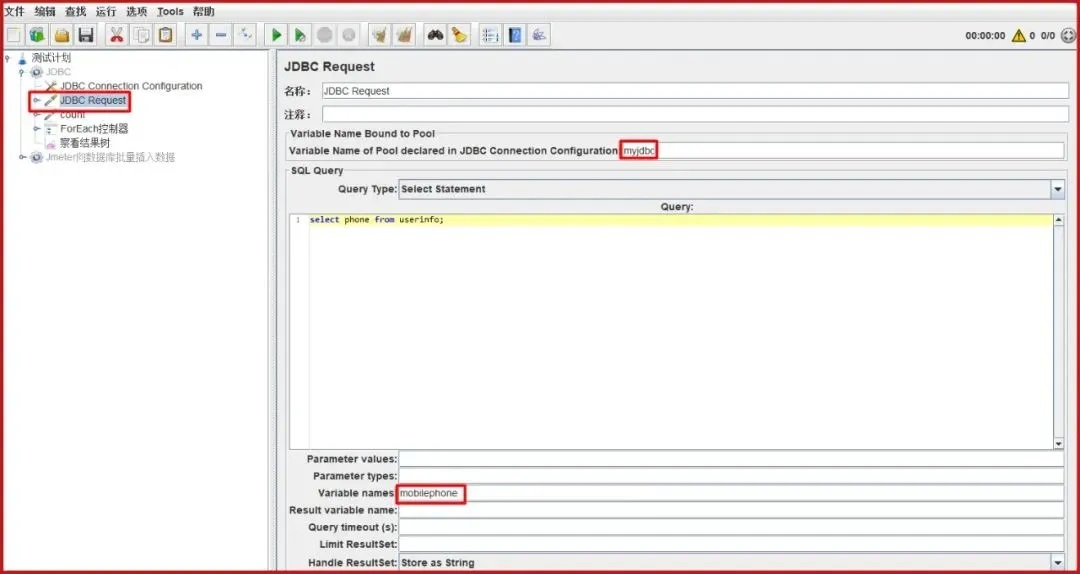- 测试开发之Python核心笔记(22):组合、继承与多态
1、多用组合
不同的类可以混合使用,加入到其他类中,来增强类的功能和代码重用性。也就是一个类的属性可以是其他类的实例。当类之间有显著不同,并且较小的类是较大的类所需要的组件时,用组合比较好。
来看一个例子:
class Name:
def __init__(self, first_name, last_name):
self.first_name = first_name
self.last_name = last_name
def __str__(self):
return "{}.{}".format(self.first_name, self.last_name)
class Address:
def __init__(self, province, city):
self.province = province
self.city = city
def __str__(self):
return "{}-{}".format(self.province, self.city)
class Person:
def __init__(self, name, address):
self.name = name
self.address = address
def __str__(self):
return "姓名:{},地址:{}".format(self.name, self.address)
if __name__ == '__main__':
p = Person(Name("Chunming", "liu"), Address("beijing", "beijing"))
print(p)我们知道圆环是由两个圆组成的。圆环的面积是外圆的面积减去内圆的面积,圆环的周长是外圆周长加上内圆的周长。用类的组成思路,定义圆环,在圆环类中组合圆形的实例作为自己的属性:
from math import pi class Circle: def __init__(self, radius): self.radius = radius def area(self): return pi * self.radius * self.radius def perimeter(self): return 2 * pi * self.radius class Ring: def __init__(self, inner_radius, outer_radius): self.inner_radius = Circle(inner_radius) # 组合圆形类作为自己的属性 self.outer_radius = Circle(outer_radius) def area(self): return self.outer_radius.area() - self.inner_radius.area() # 重用圆形类的方法 def perimeter(self): return self.inner_radius.perimeter() + self.outer_radius.perimeter() if __name__ == '__main__': r = Ring(10, 20) print(r.area()) print(r.perimeter())
2、少用继承
继承,指的是子类既拥有父类的特征(类的属性和函数)。
子类也拥有不同于父类的独特特征(自定义的属性和函数)。
Python支持多继承,但是尽量别这么做。
子类可以覆盖父类的同名方法
所有的类默认情况下都是继承自object类
用issubclass() 检查类继承关系
通过__bases__属性可以类的所有父类
2.1单继承
看例子,学继承
class Entity(object): # 父类
def __init__(self, object_type, title):
print('parent class init called')
self.object_type = object_type
self.title = title
def get_context_length(self):
return None
def __repr__(self):
return self.title + "." + self.object_type
class Document(Entity): # 1.括号中写父类,可以写多个,表示继承多个类
def __init__(self, object_type, title, author, context):
print('Document class init called')
super(Document, self).__init__(object_type, title) # 2.自定义了__init__,则必须显示调用父类构造方法
self.author = author # 3.新增自己的属性
self.__context = context
def get_context_length(self): # 4.覆盖父类的方法
return len(self.__context)
class Video(Entity):
pass # 没有复写__init__方法,则会自动调用父类的__init__方法完成初始化。
class Music(Entity):
def __init__(self, object_type, title, singer, category):
print('Document class init called')
super().__init__(object_type, title)
self.singer = singer
self.category = category
def get_context_length(self):
return "此音乐时长是4分18秒"
if __name__ == '__main__':
doc = Document("docx", "Python教程", "chunming", "写给测试人员的Python教程")
print(doc)
print(doc.get_context_length())
video = Video('mp4', "Python视频教程")
print(video)
print(issubclass(Video, Entity))
print(video.get_context_length())Entity是父类,Document和Video是继承自Entity的子类,他们都继承了父类的object_type和title属性,以及get_context_length方法。Document还有自己的独特属性author和__context。Document类的get_context_length方法覆盖了父类的方法。
当子类调用父类的方法时,可以通过super(子类,self)方式。看看官网中super的介绍:
class super(object) | super() -> same as super(class, ) | super(type) -> unbound super object | super(type, obj) -> bound super object; requires isinstance(obj, type) | super(type, type2) -> bound super object; requires issubclass(type2, type) | Typical use to call a cooperative superclass method: | class C(B): | def meth(self, arg): | super().meth(arg) | This works for class methods too: | class C(B): | @classmethod | def cmeth(cls, arg): | super().cmeth(arg)
从定义中可以看到,通常用来调用对应的父类的方法。super() 与 super(子类,self)的方式是等价的,他们都会返回一个父类对象。
判断一个类是不是另外一个类的子类,可以通过issubclass判断。
2.2 多继承
虽然可以,但是尽量不用。
2.3 object和type的关系
在面向对象体系里面,存在两种关系:
继承关系,可以通过__bases__属性可以类的所有父类(因为Python支持多继承)。
类与实例关系,可以通过__class__属性查看实例的类型,或者使用type()函数查看。
在Python的世界中,所有类都是object的子类;所有对象都是type的实例。
class Parent: pass class Child(Parent): pass if __name__ == '__main__': p = Parent() c = Child() print(Parent.__bases__) # 获取Parent类的父类,输出为(<class 'object'>,) print(Child.__bases__) # 获取Child类的父类,输出(<class '__main__.Parent'>,) print(c.__class__) # 获取c的类型,输出<class '__main__.Child'> print(type(c)) # 等同于c.__class__ print(object.__class__) # object类是type类型,输出<class 'type'> print(object.__bases__) # object类 无父类,输出为() print(type.__class__) # type类是type类型,输出<class 'type'> print(type.__bases__) # type类 的父类是object类,输出为(<class 'object'>,) print(list.__class__) # list类是type类型,输出<class 'type'> print(list.__bases__) # list类的父类是object类,输出(<class 'object'>,) print(tuple.__class__) # tuple类是type类型,输出<class 'type'> print(tuple.__bases__) # tuple类的父类是object类,输出(<class 'object'>,) print(dict.__class__) # dict类是type类型,输出<class 'type'> print(dict.__bases__) # dict类的父类是object类,输出(<class 'object'>,)
可见object类、type类、list类、tuple类、dict类都是type类型,也就是说是type类的实例。type类、list类、tuple类、dict类的父类都是object类,object类本身没有父类。
3、多态很方便
还是用上面的例子,学多态的应用。在main里面,实例化三个类,并且定义了一个统一的接口来访问实例的方法。
if __name__ == '__main__':
doc = Document("docx", "Python教程", "chunming", "写个测试人员的Python教程")
music = Music('mp4', "风吹麦浪", "李键", "抒情")
video = Video('mp4', "Python视频教程")
# print(doc.get_context_length())
# print(music.get_context_length())
def get_length(entity): # 统一接口,根据传进来的实例类型自动找到它的方法执行
print(entity.get_context_length()) # 访问实例的方法。
get_length(doc)
get_length(music)
get_length(video)这就是多态,指在不考虑实例类型的情况下使用实例的方法。通过这个例子,能够直观感受到多态的优点:
增加了程序的灵活性
以不变应万变,不论对象千变万化,使用者都是同一种形式去调用,如get_length(picture)
增加了程序额可扩展性
通过继承Entity类创建了一个新的类Picture,使用者无需更改自己的代码,还是用get_length(picture)去调用
class Picture:
def __init__(self, photographer, pixel):
self.photographer = photographer
self.pixel = pixel
def get_context_length(self): # 声明同样的方法
return "像素是 {}".format(self.pixel)这种行为称为多态。也就是说,get_length()方法调用将作用在 参数entity的实际类型上。entity是Document类型,它实际上拥有自己的 get_context_length()方法以及从 Entity类继承的 get_context_length()方法,但调用 entity.get_context_length()总是先查找它自身的定义,如果没有定义,则顺着继承链向上查找,直到在某个父类中找到为止,例如上面例子中的video。
由于Python是动态语言,所以,传递给函数get_length()的参数 entity 不一定是 Entity 或 Entity 的子类型。任何数据类型的实例都可以,只要它有一个get_context_length()的方法即可。
作者:liuchunming033
原文链接:https://blog.csdn.net/liuchunming033/article/details/107956591#comments_13222935
- 0.00 查看剩余0%
- 【留下美好印记】赞赏支持
- 推荐阅读
- 换一换
- SeleniumBase是一个自动化web测试框架,它的设计pyse相似,基于selenium和unittest封装的框架,api多,支持命令行多参数执行文档地址:https://github.com/seleniumbase/SeleniumBase下载pip下载 pip install seleniumbasegit克隆git clone https://github.com/seleniumbase/SeleniumBase.git cd SeleniumBase pip install -r require...
-
- 测试一个新功能时,最重要的一个步骤就是编写测试用例,测试用例写好了,那么后面的测试工作基本就非常顺利了,那么作为一个职场新人来说,怎样提高测试用例的质量呢? 充分理解需求 作为一个新人来说,对所做项目并没有太深入的了解,那么拿到测试需求后,不应该拿到什么就是什么,需求上怎么写就怎么做,要有自己的见解。 举个例子来说,某个网站年终大促,要搞个优惠活动,有两种优惠方式: 第一种是店铺自己发的优惠,两件8折、3件7折; 另一种是平台提供的优惠,满100-10、200-30。 测试人员A拿到这个需求后,发现非常简单,迅速的就将测试用例编写完了,如下: 乍一看是没有问题的,所有情况也都...

-
- 随着金三银四的来临,经济的复苏,各行各业也在复苏,相信无论是即将毕业的大学生,还是想换工作的小伙伴,想必都蠢蠢欲动。 但想找到一份适合自己的工作,实际上没有想像中的那么简单。 想做或是喜欢的工作 你要明白自己想要从事或是喜欢做的行业是什么。很多即将毕业或是已经好多年的小伙伴,一直不知道自己想要从事什么样的工作。 面包前面,随便选择了一份自己也不知道是什么的工作,等到醒悟过来的时候,又觉得自己没有能力改行,就这样,在一份自己没有兴趣的工作中浑浑噩噩好多年,浪费了好多时间。虽说面包很重要,为了目前的面包,可以做暂时的妥协,但自己也要清楚自己在多长时间后可以做自己喜欢的事情。 一份自己...
-
- 1、添加Jdbc Request 2、添加ForEach控制器(右键线程组->逻辑控制器->ForEach控制器) ①输入变量的前缀:mobilephone; 从jdbc request设置的变量得知,我们要取的值为mobilephone_1、mobilephone_2、mobilephone_3......所以这里输入mobilephone ②Start index for loop:0 变量循环启动的索引,第一个元素起始索引+1End index for loop:6;变量循环结束的索引。所以这里是取值mobilephone_1、mobilephone_2、......

-
- 本文是一篇利用AI生成测试用例的实战内容,包括AI原理及测试用例生成过程两方面,接下来先看看测试界面及生成的测试用例效果展示。 一 训练结果 测试页面 下图这是我的测试页面: AI模型生成的测试用例: 二 Kimi AI 模型介绍 地址:https://kimi.moonshot.cn/chat/cnjrkho3r0737glhtm80 Kimi AI模型是由月之暗面科技有限公司(Moonshot AI)开发的智能助手。它的核心能力在于处理长文本,支持长达20万汉字的输入,这在全球大模型产品中是一个显著的特点。Kimi AI能够处理多种类型的文件和来自不同网站的内容,包括PD...

-
- 关于我们 联系我们 版权声明 广告服务 站长统计
- 建议使用IE 11.0以上浏览器,800×600以上分辨率,法律顾问:上海兰迪律师事务所 项棋律师
- 版权所有 上海博为峰软件技术股份有限公司 Copyright©51testing.com 2003-2024, 沪ICP备05003035号
- 投诉及意见反馈:webmaster@51testing.com; 业务联系:service@51testing.com021-64471599-8017

- 51testing软件测试圈微信



